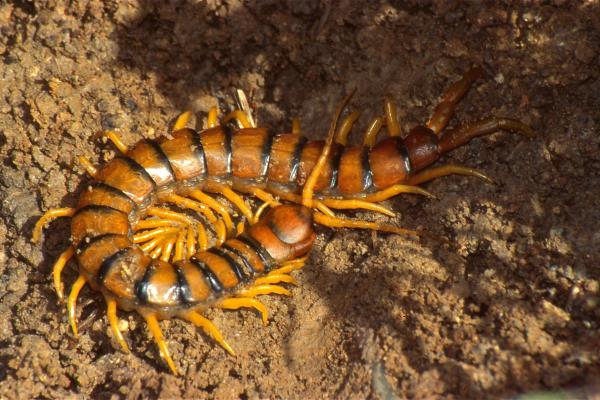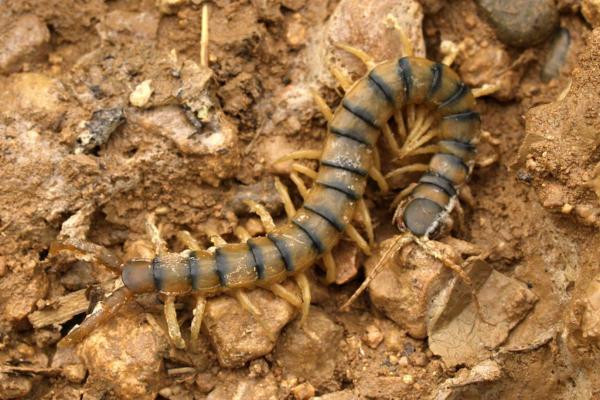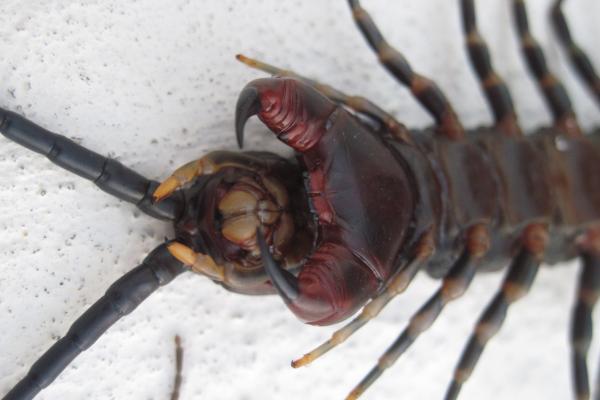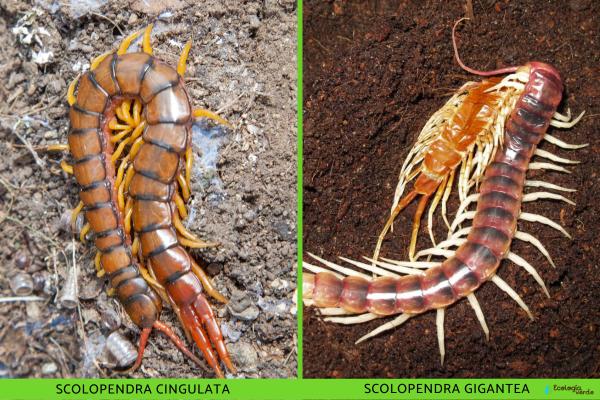Scolopendra, commonly known as centipedes, belong to the genus Scolopendra and are among the most well-known multi-legged arthropods. There are over 80 recognized species worldwide, all sharing common traits such as a dangerous appearance, multiple strong locomotor appendages, and a pair of venomous fangs. This article will introduce you to the key characteristics, habitats, feeding habits, and potential dangers of these fascinating creatures.

Color and Appearance: Scolopendra species vary in color from black and brown to yellowish hues.
Body Structure: Their bodies consist of 21 segments, each protected by a tough exoskeleton which serves as both a physical barrier and structural support.
Legs: Each segment has one pair of legs, totaling 21 pairs. These legs are strong and agile, enabling them to capture prey and even hang upside down while handling food.
Antennae: Equipped with two antennae used for sensing vibrations and exploring their surroundings.
Tail Appendages: The elongated appendages at their rear distract predators by making it difficult to identify their head.
Size: Tropical species can reach lengths up to 30 cm, while temperate species usually measure around 15 cm. They are robust, approximately 4 cm wide.
Venomous Predators: Scolopendra are ancient venomous predators, using a complex toxin cocktail for hunting and defense.

Scolopendra possess complex mouthparts including two pairs of powerful jaws and maxillae, with the first pair of legs modified into venomous claws called forcipules. These deliver venom to immobilize prey.
Their venom can cause a range of symptoms including destruction of red blood cells, heart failure, fever, and intense localized pain. Bites often result in swelling, pustules, and sometimes tissue necrosis. The bite leaves visible puncture marks. Incidents peak in warm and rainy seasons, mainly affecting limbs like arms and legs.
While lethal to small animals, human fatalities are rare, mostly occurring in children, elderly, or those with severe allergic reactions. Severe infections may require surgical cleaning and intravenous antibiotics, with prolonged recovery.

Scolopendra thrive in moist, shaded environments away from direct sunlight. They hide under rocks, in cracks, or burrow underground during the day.
Species have distinct geographical ranges, mostly preferring tropical climates:
Scolopendra cingulata: Mediterranean regions of Europe
Scolopendra gigantea: South America and the Caribbean
Other species inhabit Japan, Africa, Thailand, China, and Vietnam.
Escolopendra subspinipes and Scolopendra morsitans are cosmopolitan species exhibiting color variation by location.

These nocturnal predators have a diverse diet, feeding on insects, spiders, cockroaches, snails, and even amphibians, bats, snakes, and rodents. Cannibalism has also been observed among some individuals.
Scolopendra reproduce sexually with internal fertilization. Males deposit spermatophores (sperm packets) on the ground, which females then take inside for fertilization. Females lay 20 to 60 eggs in hidden burrows and guard them vigilantly, moistening them with saliva to prevent infection. Some offspring may even cannibalize their mother after hatching.
Understanding the behavior, habitat, and risks associated with Scolopendra helps in safely coexisting with these ecologically important yet potentially dangerous animals. For more wildlife knowledge, explore our “Animal Encyclopedia” section.
Bibliography
Siriwut , W. , Edgecombe , G. D. , Sutcharit , C. , Tongkerd , P. , & Panha , S. (2016). A taxonomic review of the centipede genus Scolopendra Linnaeus, 1758 (Scolopendromorpha, Scolopendridae) in mainland Southeast Asia, with description of a new species from Laos. ZooKeys, (590),
Puzzo , A. , Pari , C. , Bettinelli , G. , Raggini , F. , Paderni , S. , & Belluati , A. (2020). An unusual two-stage infection following a scolopendra bite. Acta Bio Medica: Athens Parmensis, 91(Suppl 14).
animal tags: Scolopendra
We created this article in conjunction with AI technology, then made sure it was fact-checked and edited by a Animals Top editor.